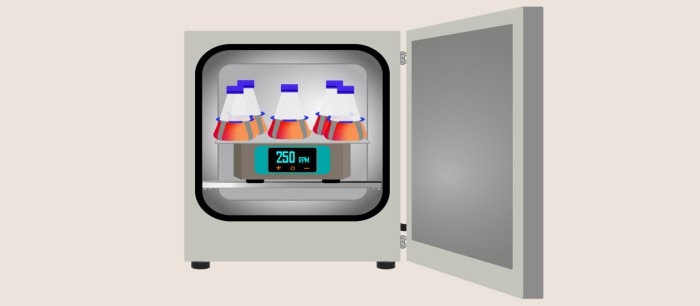MENÜ
DE | EUR
DE | EUR
-
- Alle Zentrifugen
- Tischzentrifugen
- Standzentrifugen
- Gekühlte Zentrifugen
- Mikrozentrifugen
- Mehrzweckzentrifugen
- Hochgeschwindigkeitszentrifugen
- Ultrazentrifugen
- Concentrator
- IVD Produkte
- High-Speed and Ultracentrifuge Consumables
- Zentrifugenröhrchen
- Zentrifugenplatten
- Gerätemanagement
- Proben- und Informationsmanagement
-
- Alle Pipetten, Dispenser und automatischen Liquid-Handling-Systeme
- Mechanische Pipetten
- Elektronische Pipetten
- Mehrkanalpipetten
- Direktverdrängerpipetten & Dispenser
- Pipettenspitzen
- Flaschenaufsatzdispenser
- Pipettierhilfen
- Zubehör für Dispenser & Pipetten
- Automatisches Pipettieren
- Verbrauchsartikel für die Automation
- Zubehör für die Automation
- Services für Dispenser & Pipetten
Sorry, we couldn't find anything on our website containing your search term.
Sorry, we couldn't find anything on our website containing your search term.

What is a CO2-resistant shaker?
Lab Academy
- Cell Biology
- Cell Culture
- Lab Routine
- Contamination
- Efficiency
- CO2 Incubators
- FAQ
This article was published first in "Inside Cell Culture" , the monthly newsletter for cell culture professionals. Find more interesting articles about CO2 incubators on our page "FAQs and material on CO2 incubators" .
A CO2-resistant shaker is used to agitate a small number of shake flasks with mammalian cells in suspension culture inside a CO2 incubator. These cultures are, for example used for the expression of recombinant proteins or the production of bioreactor starter-cultures (inoculum). For higher throughput, CO2 incubators with an integrated shaker are used.
The term “CO2-resistant shaker” itself that is often used, also by manufacturers, is clearly misleading as it doesn´t address the main challenge these devices are facing and overcoming inside a CO2 incubator. The elevated CO2-concentration itself inside the incubator chamber is not the main challenge. However, together with the high relative humidity (usually ~95%) CO2-resistant shakers face a slightly acidic atmosphere that is highly corrosive. In addition, this humid atmosphere can lead to electronic malfunctions and spills of culture medium entering the device may form a contamination nucleus that is hard to detect and remove. Therefore, in contrast to standard open-air shakers, a CO2 resistant shaker comes with design specialized for the use inside a CO2 incubator.
Features and limitations of a typical CO2 resistant shaker:
Read more about the proper selection of a CO2 resistant orbital shaker in our White Paper .
A CO2-resistant shaker is used to agitate a small number of shake flasks with mammalian cells in suspension culture inside a CO2 incubator. These cultures are, for example used for the expression of recombinant proteins or the production of bioreactor starter-cultures (inoculum). For higher throughput, CO2 incubators with an integrated shaker are used.
The term “CO2-resistant shaker” itself that is often used, also by manufacturers, is clearly misleading as it doesn´t address the main challenge these devices are facing and overcoming inside a CO2 incubator. The elevated CO2-concentration itself inside the incubator chamber is not the main challenge. However, together with the high relative humidity (usually ~95%) CO2-resistant shakers face a slightly acidic atmosphere that is highly corrosive. In addition, this humid atmosphere can lead to electronic malfunctions and spills of culture medium entering the device may form a contamination nucleus that is hard to detect and remove. Therefore, in contrast to standard open-air shakers, a CO2 resistant shaker comes with design specialized for the use inside a CO2 incubator.
Features and limitations of a typical CO2 resistant shaker:
- Low heat dissipation to avoid interference with the temperature control of the CO2 incubator
- Sealed electronics and mechanical parts to avoid malfunctions, corrosion, and contamination inside
- Corrosion-resistant exterior made of stainless steel or specialized plastics like Acrylonitrile butadiene styrene (ABS) that can also be disinfected
- Platform capacity and drive design limited to shake a few 1L flasks (low throughput applications)
- Some devices are limited to 200 rpm and may therefore not be suitable for protocols with higher rpm of plates and tubes
- Limited use with parallel cultivation of vibration-sensitive adherent cells like stem cells or primary cells due to transfer of vibrations
Read more about the proper selection of a CO2 resistant orbital shaker in our White Paper .
Mehr erfahren
